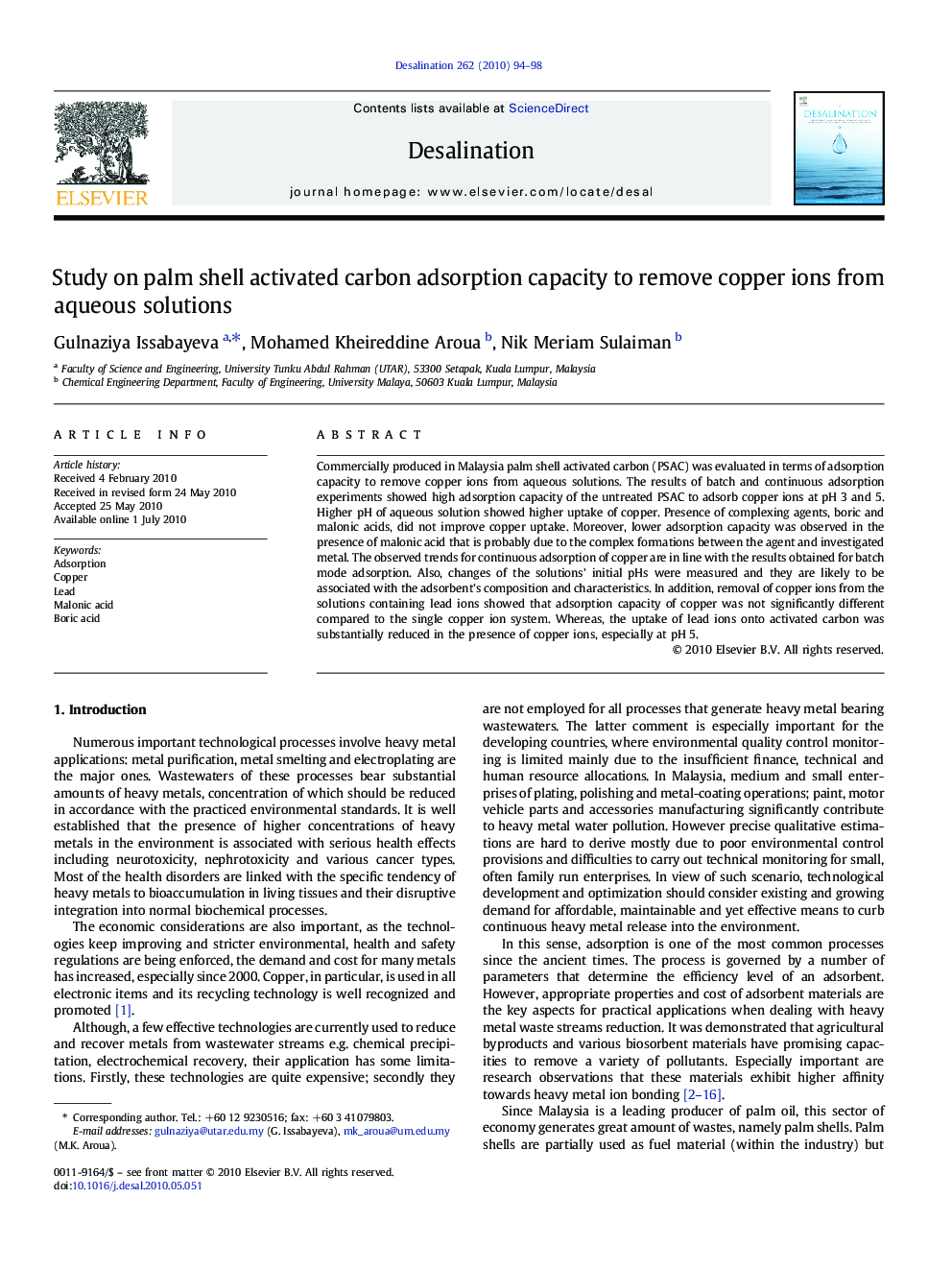| Article ID | Journal | Published Year | Pages | File Type |
|---|---|---|---|---|
| 625535 | Desalination | 2010 | 5 Pages |
Commercially produced in Malaysia palm shell activated carbon (PSAC) was evaluated in terms of adsorption capacity to remove copper ions from aqueous solutions. The results of batch and continuous adsorption experiments showed high adsorption capacity of the untreated PSAC to adsorb copper ions at pH 3 and 5. Higher pH of aqueous solution showed higher uptake of copper. Presence of complexing agents, boric and malonic acids, did not improve copper uptake. Moreover, lower adsorption capacity was observed in the presence of malonic acid that is probably due to the complex formations between the agent and investigated metal. The observed trends for continuous adsorption of copper are in line with the results obtained for batch mode adsorption. Also, changes of the solutions' initial pHs were measured and they are likely to be associated with the adsorbent's composition and characteristics. In addition, removal of copper ions from the solutions containing lead ions showed that adsorption capacity of copper was not significantly different compared to the single copper ion system. Whereas, the uptake of lead ions onto activated carbon was substantially reduced in the presence of copper ions, especially at pH 5.
